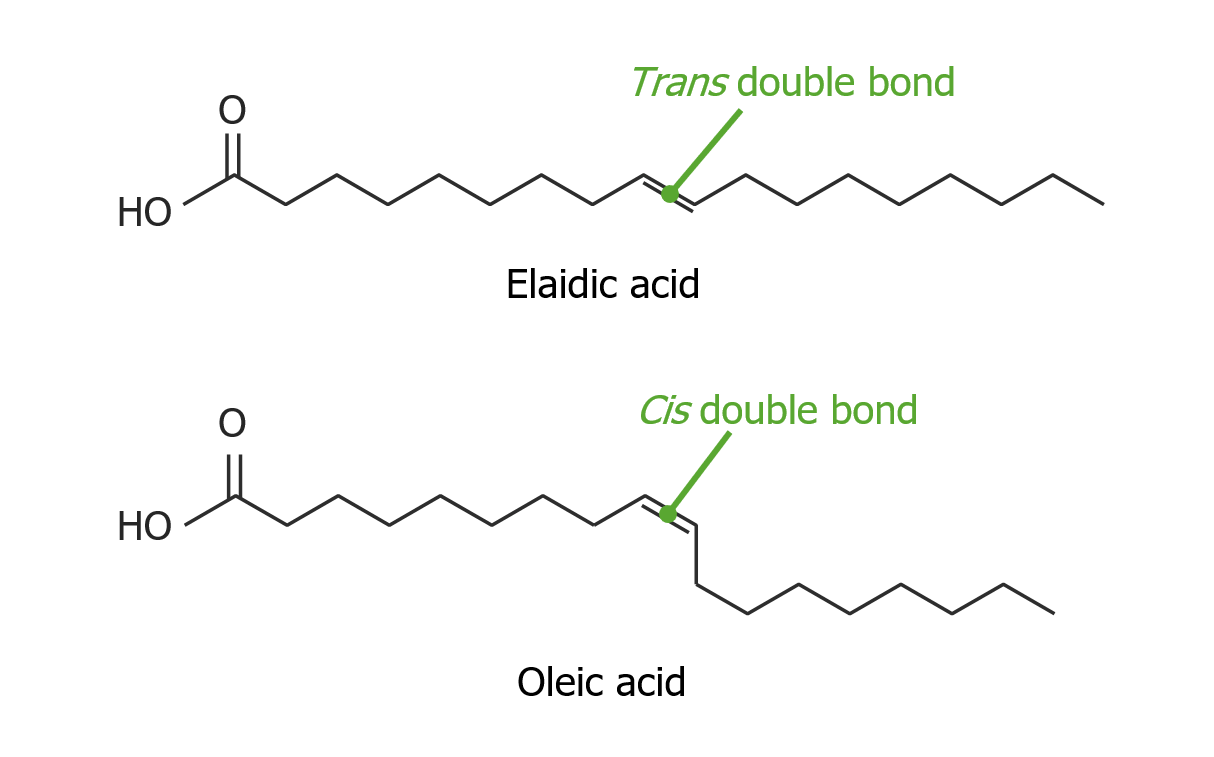Playlist
Show Playlist
Hide Playlist
Fat Breakdown and Synthesis
-
07 Advanced LipidMetabolism-Fat&FattyAcids.pdf
-
Reference List Biochemistry.pdf
-
Download Lecture Overview
00:01 They've indicated in previous lectures, the lipids are incredibly diverse set of molecules but as we will see they have very common roots and a very simple molecule. 00:10 In this lecture, I'll start that process by talking about fat and fatty acid metabolism. 00:15 Now, fat metabolism is something that all of us wanna do, if we can -- if we're worried too much about how much we're carrying around. 00:21 First, I wanna talk about fat breakdown. 00:23 Fats and oils are as we've seen triglycerides and fat is stored in our body in specialized cells called adipocytes. 00:31 The fat is important to travel in our blood stream but it's also a difficult way to travel because it's not water soluble where is our blood actually is mostly aqueous solution. 00:41 To travel in the bloodstream fat must go through complexes called lipoprotein complexes and you probably know them as LDLs and chylomicrons. 00:50 Fats are broken down into fatty acids and glycerol, it's constituents -- constituents components. 00:56 By action of enzymes called lipases. 00:59 You can see on the screen a typical fat molecule. 01:03 It has a glycerol backbone is shown here and you can see Ester bonds between all the fatty acids and the glycerol. 01:09 Now, each of those individuals fatty acids are targets of action of different lipases. 01:14 The first one is shown at the top is a targeted enzyme known as hormone sensitive lipase and it will cleave only the first fatty acid. 01:23 The second fatty acid was cleaved by an enzyme called diacyglycerol lipase. 01:28 The third enzyme is cleaved off by an enzyme called monocyglycerol lipase. 01:33 The product of that is glycerol molecule and three fatty acids. 01:37 If we're moving to make a fat then, it's not the simple reversal of the process although it's similar. 01:43 The starting point for this synthesis of a fat is not glycerol but glycerol-3-phosphate as you can see on the screen. 01:50 In the first step of the reaction glycerol-3-phosphate is converted into a molecule called lysophosphatidic acid, and that simply is a glycerol-3-phosphate that had a fatty acid attached to position 1 by an enzyme called acyltransferase 1. 02:06 A similar reaction adds the second fatty acid as you can see here by an enzyme called acyltransferase 2. 02:14 At this point, we have a molecule called phosphatidic acid and as we will see phosphatidic acid is a branch point in the synthesis of other lipids. 02:23 Now, the fatty acid in phosphatidic acid are usually saturated at position 1. 02:29 Meaning all single bonds and usually unsaturated at position two meaning having one or more double bonds. 02:37 Phosphatidic acid can be convert into fat in only two more steps. 02:42 First, the phosphate part of phosphatidic acid is removed by a phosphatase as you can see here. 02:48 That leaves behind a molecule called diacylglcyerol. 02:51 Diacylglcyerol is converted into a triacylgcyerol which is either a fat or an oil by the enzyme acyltransferase 3. 03:00 Now, whether something as a fat or an oil depends upon whether or not it is a solid room temperature a fat or a liquid at room temperature called an oil. 03:10 Chemically the differences between these two are not very significant. 03:13 They arise from the composition of the fatty acids within the fat. 03:17 A fat is a molecule that contains mostly saturated bonds and therefore is what gives of the property being a solid at room temperature. 03:27 And oil on the other hand has a considerable amount of unsaturated bond within it and results in being a liquid at room temperature.
About the Lecture
The lecture Fat Breakdown and Synthesis by Kevin Ahern, PhD is from the course Lipid Metabolism.
Included Quiz Questions
Which of the following is true of triglycerides?
- They are broken down by lipases.
- They travel freely in the bloodstream.
- They usually have all fatty acids saturated.
- They are stored in all cells.
- They do not contain glycerol.
Which of the following is NOT correctly associated with fat metabolism?
- Acetyltransferase 3 — removal of third fatty acid from the fat molecule.
- Hormone-sensitive lipase — removal of the first fatty acid from the fat molecule.
- Glycerol-3-phosphate — the starting point for fat synthesis.
- Phosphatidic acid — the branch point in the synthesis of other lipids.
- Phosphatase enzyme — removal of phosphate from the phosphatidic acid.
Customer reviews
5,0 of 5 stars
| 5 Stars |
|
2 |
| 4 Stars |
|
0 |
| 3 Stars |
|
0 |
| 2 Stars |
|
0 |
| 1 Star |
|
0 |
Yea, these lessons site wide need more quiz questions. Only thing holding this site back from being outstanding.
The Good: Lecture: 5/5 Amazing Lecture! I learned a lot! The Not so good: Quiz:2/5 Only 1 question....and was not as specific as I would like it to have been. Perhaps consider having at least 50% of the terms discussed included in the Quiz.





